Swami
Vivekananda's First Hosts in Bombay
Swami Shuddharupananda
 From
the Life of Swami Vivekananda by his Eastern and
Western disciples we learn that Swamiji was in Khandwa towards
the end of June 1892. (1) He had stayed there for about
three weeks with Babu Haridas Chatterji, a pleader. From
his talks with his host there, we come to know of Swamiji's
serious intention to attend the Parliament of Religions
in Chicago, to be held the following year. Earlier, Swamiji
had heard of this religious convention when he was in Kathiawar.
The book on the life of Thakur Saheb Jaswant Singhji of
Limbdi, which was written in Gujarati and published in 1896,
mentions that it was the Maharaja of Limbdi who gave Swamiji
the idea of going to the West to preach Vedanta. We learn
further from the Life that when Swamiji was in Porbandar,
Pandit Shankar Pandurang, the dewan of the state, told him,
'Swamiji, I am afraid you cannot do much in this country.
Few will appreciate you here. You ought to go to the West,
where people will understand you and your worth. Surely
you can throw great light upon Western culture by preaching
the Sanatana Dharma!' Swamiji was glad to hear these words,
for they coincided with his own thoughts, which he had expressed
to C H Pandya of Junagadh, though vaguely. (2)
From
the Life of Swami Vivekananda by his Eastern and
Western disciples we learn that Swamiji was in Khandwa towards
the end of June 1892. (1) He had stayed there for about
three weeks with Babu Haridas Chatterji, a pleader. From
his talks with his host there, we come to know of Swamiji's
serious intention to attend the Parliament of Religions
in Chicago, to be held the following year. Earlier, Swamiji
had heard of this religious convention when he was in Kathiawar.
The book on the life of Thakur Saheb Jaswant Singhji of
Limbdi, which was written in Gujarati and published in 1896,
mentions that it was the Maharaja of Limbdi who gave Swamiji
the idea of going to the West to preach Vedanta. We learn
further from the Life that when Swamiji was in Porbandar,
Pandit Shankar Pandurang, the dewan of the state, told him,
'Swamiji, I am afraid you cannot do much in this country.
Few will appreciate you here. You ought to go to the West,
where people will understand you and your worth. Surely
you can throw great light upon Western culture by preaching
the Sanatana Dharma!' Swamiji was glad to hear these words,
for they coincided with his own thoughts, which he had expressed
to C H Pandya of Junagadh, though vaguely. (2)
During
this period Swamiji exhibited intense spiritual power, which
was corroborated by Swami Akhandanandaji. The latter had
met Swamiji around this time in Mandvi, Gujarat. He said
that he was astonished to see the change in Swamiji's face,
which had a sublime, divine radiance.
Now
we can understand why Swamiji told Haridas Babu that if
someone helped him with the passage money, he was prepared
to go to America. Haridas Babu recognized Swamiji's great
personality and wanted him to extend his stay in Khandwa.
But Swamiji had to make his pilgrimage to Rameswaram. So
he could not extend his stay, nor could he keep halting
at other places. Seeing Swamiji's resolve, Haridas Babu
gave a letter of introduction to his brother in Bombay and
told Swamiji that his brother would introduce him to Seth
Ramdas Chabildas, a wellknown barrister there. He then bought
for Swamiji a train ticket to Bombay.
The
House Where Swamiji Stayed in Bombay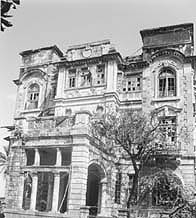
Swamiji
reached Bombay in the last week of July 1892. There, Haridas
Chatterjee's brother introduced Swamiji to Ramdas Chabildas,
who received him cordially and requested him to be his guest.
Swamiji agreed.
In his 'Discourses on Jnana Yoga' Swamiji says, 'The higher
understanding is extremely difficult. The concrete is more
to most people than the abstract.' (3) And he cites an illustration
in which he gives the description of the house of Ramdas
Chabildas, his first host in Bombay. He talks about two
men, one a Hindu and the other a Jain, who were playing
chess in the rich merchant's home, which was near the sea.
(We introduced the above subject to give the reader an idea
of the house and its location. For the whole story the reader
may refer to the said lecture.)
In
January 2003 the present author located the house of Ramdas
Chabildas with the help of two descendants of Chabildas
Lalubhai. It stands on Dorab Shaw Lane, Napeon Sea Road,
Bombay. (4) Some photographs of the building are included
in this article along with their description.
The
author found the house in extremely dilapidated condition.
Only the front porch was in use, by security guards, who
were manning the place on behalf of its present owner, Sri
Bilasrai Mahavir Prasad Badriprasad. The house is a threestoreyed
building, known as Samudra Villa. Except for the porch all
other areas of the house are unsafe for human habitation.
Situated beside the sea, it has long balconies on the first
and second floors and matches Swamiji's description of it.
After a lot of coaxing, the guards allowed the author inside
to have a look. The author has some knowledge of architecture
and building construction. After analysing the style of
construction and the materials used, he feels that the house
is more than 150 years old. The ground floor has stables
that can accommodate six to eight horses. Stables in a residential
building speak of the owner's wealth. At the rear are utilities
like toilets and servants' quarters in a separate threestoreyed
building. The main house is connected with the utilities
at every floor.
This
house belonged to Seth Chabildas Lalubhai, who was one of
the wealthy merchants of Bombay. We have the sale document
of the Samudra Villa, dated April 1916, executed between
Kesarbai, wife of Chabildas Lalubhai, and the purchaser,
Dorab Shaw Bomanjee Dubash, a Parsee. That explains how
the lane got its name.
It would be a good idea if, with permission from the headquarters,
the local Ramakrishna Math arranges to put up a small marble
tablet near this bungalow to commemorate Swamiji's stay
there during JulyAugust 1892.
Ramdas
Chabildas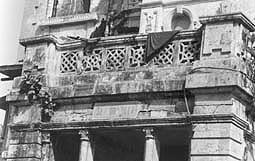
In
1875 Ramdas Chabildas was a student of Elphinstone School,
which has all along been a prestigious institution. (5)
Later he went to England and earned his postgraduate degree
in arts around 1884 and then his law degree. On his return
to India the government honoured him with a walking stick
with a goldandsilver handle, for becoming the first Indian
barrister. Ramdas Chabildas was also a Sanskrit scholar,
well grounded in the Vedas and the Upanishads. Apart from
Swamiji, he had hosted at his bungalow eminent spiritual
personalities like Swami Dayananda Saraswati. So his house
must have resonated with religious debates and discussions.
(6) He was a staunch Arya Samajist and a founder member
of its Bombay branch. From Swami Dayananda Saraswati he
received training in basic Sanskrit and in composing kavyas.
On Dayananda Saraswati's demise in 1883, he composed a twentyoneverse
tribute to him in Sanskrit. It is significant that the Arya
Samaj of Bombay had about 100 founder members in 1875. Among
them Chabildas Lalubhai was prominent.
During
Swamiji's twomonth stay in his bungalow, Ramdas had numerous
discussions with him, one of 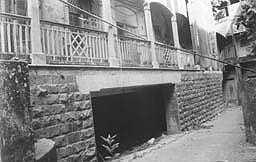 which
has come to light from Mahapurush Maharaj's conversations
at the Bombay ashrama on 19 January 1927. Mahapurush Maharaj
told the monks that Swamiji had stayed in Ramdas Chabildas'
house and visited many places in Bombay. He further said,
'Ramdas Chabildas belonged to the Arya Samaj and was against
the worship of God with form. He had much discussion with
Swamiji concerning it. One day he said to Swamiji, "Well,
Swamiji, you say that worship of God with forms, idolworship
and such other doctrines are true. If you can prove these
doctrines by arguments quoted from the Vedas, I shall leave
the Arya Samaj, I promise you." Swamiji replied emphatically,
"Yes, surely, I can do that." And he began to
explain to Chabildas the Hindu doctrine of imageworship
and such other doctrines in the light of the Vedas. Ramdas
Chabildas was convinced and made good his promise by leaving
the Arya Samaj.'
which
has come to light from Mahapurush Maharaj's conversations
at the Bombay ashrama on 19 January 1927. Mahapurush Maharaj
told the monks that Swamiji had stayed in Ramdas Chabildas'
house and visited many places in Bombay. He further said,
'Ramdas Chabildas belonged to the Arya Samaj and was against
the worship of God with form. He had much discussion with
Swamiji concerning it. One day he said to Swamiji, "Well,
Swamiji, you say that worship of God with forms, idolworship
and such other doctrines are true. If you can prove these
doctrines by arguments quoted from the Vedas, I shall leave
the Arya Samaj, I promise you." Swamiji replied emphatically,
"Yes, surely, I can do that." And he began to
explain to Chabildas the Hindu doctrine of imageworship
and such other doctrines in the light of the Vedas. Ramdas
Chabildas was convinced and made good his promise by leaving
the Arya Samaj.'
It seems Ramdas Chabildas was only a few years older than
Swamiji; so they gelled. Moreover, they had converging interests:
scriptures and Sanskrit. On 22 August 1892, Swamiji wrote
to the Dewan of Junagadh, 'I have got here some Sanskrit
books and help, too, to read, which I do not hope to get
elsewhere, and I am anxious to finish them.' (7)
It
appears Swamiji could not visit the Elephanta caves because
the monsoon had already set in, preventing launches from
plying to Elephanta Island. During the monsoon the Arabian
Sea is very rough, choppy and ferocious. However, Swamiji
did visit the Kanheri caves near Borivili, a description
of which will be given later on in the article. In his unpublished
letter dated 22 May 1893 from Bombay, he writes to the Maharaja
of Khetri, 'At Bombay I went to see my friend Ramdas, barristeratlaw.
He is rather a sentimental gentleman and was [so] much impressed
with your highness' character that he told me that had it
not been midsummer he would rather fly to see such a prince.'
From
Bombay Swamiji went to Poona. At the railway station he
was introduced to the renowned 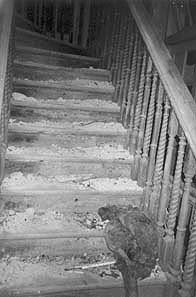 scholar
and patriot Lokamanya Bal Gangadhar Tilak, who was his fellow
passenger. Tilak says in his reminiscences, 'At Victoria
Terminus a sannyasin entered the carriage I was in. A few
Gujarati gentlemen were there to see him off. They made
the formal introduction and asked the sannyasin to reside
at my house during his stay at Poona.' (8) We can safely
assume that among the group of Gujarati gentlemen were Ramdas
Chabildas and Shyamji Krishna Verma, his friend and brotherinlaw.
scholar
and patriot Lokamanya Bal Gangadhar Tilak, who was his fellow
passenger. Tilak says in his reminiscences, 'At Victoria
Terminus a sannyasin entered the carriage I was in. A few
Gujarati gentlemen were there to see him off. They made
the formal introduction and asked the sannyasin to reside
at my house during his stay at Poona.' (8) We can safely
assume that among the group of Gujarati gentlemen were Ramdas
Chabildas and Shyamji Krishna Verma, his friend and brotherinlaw.
Ramdas Chabildas' Family
After
getting his law degree, Ramdas Chabildas started his practice
in Bombay. Later, in the late 1880s, he began his practice
as barrister in Nagpur. (9) He purchased a twoacre property
at Civil Lines from the Baxi family and built a large bungalow,
Jamna Villa, named after his wife Jamnabai. (10) The Baxis
were neighbours of Ramdas Chabildas. Ramdas Chabildas had
two sons, Suryakant and Jaisen, both barristers. Suryakant
died when he was about forty, leaving behind three sons
and two daughters. Jaisen practised as a 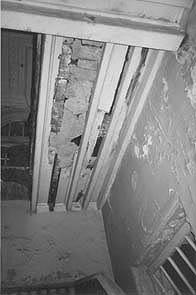 barrister
in Nagpur and was elected mayor of the city. The Corporation
of Nagpur honoured him by naming one of the city's neighbourhoods
as Ramdas Peth, after his father. Suryakant's eldest son
Janak was a commander in the Indian Navy.
barrister
in Nagpur and was elected mayor of the city. The Corporation
of Nagpur honoured him by naming one of the city's neighbourhoods
as Ramdas Peth, after his father. Suryakant's eldest son
Janak was a commander in the Indian Navy.
At
present, Ramdas Chabildas' property is all sold and his
descendants are living mainly in Bombay, except for one
in Nagpur. On the said property there still exists a memorial
that preserves the relics of Ramdas Chabildas and his wife.
Two marble tablets on the memorial say Ramdas Chabildas
died on 22 October 1920 and Jamnabai on 10 January 1914.
Chabildas Lalubhai (Ramdas' Father)
Chabildas
Lalubhai was born in Bombay in 1839. He was a Suryavanshi
Gujarati, a kshatriya belonging to the Chevali Bhansali
community. Bhansalis are descendants of King Bhanusal, who
ruled in the northwestern part of India. Their family deity
is Mother Hinglaj. Hinglaj is a place in Baluchistan (now
in Pakistan) popularly known as Marubhumi Hinglaj ('desert
Hinglaj'). It is one of the shaktipithas of Mother
Sati. A journey to Hinglaj is very difficult due to its
hostile terrain. Swami Trigunatitananda had visited this
place on pilgrimage.
In
later times, the Bhansali community came further down from
the northwest, and some of them settled in Kutch, Sorath
(Kathiawar), Surat, Sindh and Cheval. So they are called
Kutchi, Sorathi, Sindhi and Chevali Bhansalis. Being Gujaratis,
the Bhansali community preferred to do business and trade.
Chabildas Lalubhai's father was Lalubhai Jairamdas; he was
in the British Army.
Chabildas
Lalubhai As a Businessman and Builder
At
the young age of thirteen years Chabildas Lalubhai joined
Messrs Cullar Palmer & Co at their Bombay branch for
Rs 15 a month. From the beginning his mind was set on starting
his own business. So after gaining some experience he gave
up his salaried job, purchased some big countryboats and
used them for carrying freight to and from foreign steamers
at BhavchaDhakka (Bombay seaport). This enterprise of his
was highly successful. Gradually he became one of the foremost
business magnates and owned his own steamship named Galileo
for doing business with foreign companies. Galileo was insured
for Rs 5 lakh. At that time English cloth was hugely popular
and much soughtafter throughout the world. Chabildas Lalubhai
took advantage of this business boom. He imported English
cloth and amassed huge wealth by selling them to wholesale
traders in Bombay. He also had a factory in Jamnagar, Saurashtra,
where decorative goods were made from ivory. He exported
these and other prime goods to Britain and France. Since
he was the first visiting Indian trader to France, the French
government honoured him with a letter of recognition.
Chabildas
Lalubhai was also highly successful in obtaining building
contracts from the government and private parties. Along
the BombayPoona rail line, from Karjat to Lonavla, where
the Khandala Ghats are situated, he secured works connected
with the railway line. In Bombay he built a number of buildings.
The buildings he erected and owned still exist in Dadar.
(11)
Chabildas
Lalubhai's Borivili Bungalow
When
Swamiji visited Bombay in 1892 there were trains plying
between Colaba and Andheri. Since the Kanheri caves are
about 22 km from Bombay it can be presumed that along with
Ramdas Chabildas and Chabildas Lalubhai Swamiji may have
taken the train from Grant Road (which is nearer to their
bungalow) to Andheri and then proceeded to Borivili by horse
carriage, or they might have used an eighthorse shigram
carriage from the Napeon Sea Road bungalow. Chabildas Lalubhai
had a spacious bungalow in the western part of Borivili,
a suburb 20 km away from the city, along Lokamanya Tilak
Road and west of Factory Lane. He had purchased it from
Seth Jayram Bhatia. At this bungalow, he used to entertain
his British friends and business contacts. From Borivili,
the Kanheri caves are very near. Whenever guests arrived,
about forty people were hired to light the bungalow with
Petromax (gasoline) lights in the evenings and also to carry
delicious food to Kanheri, where some sort of picnic lunch
was usually arranged. Gamavati Seth, one of the descendants,
gave us this information. It is quite possible that Swamiji
too may have been lodged in this bungalow for a few days
and similarly entertained.

This
Borivili bungalow of Chabildas Lalubhai had marble statues
and a garden. It being a Gujarati's bungalow, there was
also a huge swing for people to sit on. In the evening many
people from surrounding places visited Swamiji to listen
to his talks on religion. Chandrakant, a young man who used
to come there with his father, was quite inspired. Even
after Swamiji's departure, he continued to visit the house
daily to pay obeisance to the memory of Swamiji; and this
practice he kept up until he was ripe old. When inquisitive
people asked him why he saluted the bungalow, he would narrate
that when he was young he had had the good fortune of meeting
and talking with a radiant, powerful and loving swami. (12)
After
Chabildas Lalubhai's death, his wife Kesarbai and their
two sons Janmeyjay and Bhadrasen and their families lived
in this house. The building does not exist anymore. Some
two decades back, Hansaben Goragandhi, daughter of Janmeyjay,
inherited the property and demolished the bungalow to raise
a multistoreyed apartment building.
Swamiji's
Visit to Kanheri Caves
It
is highly unlikely that Swamiji and his host would have
returned to the Napeon Sea Road bungalow  when
the latter had a big, spacious bungalow in Borivili. Moreover,
Swamiji was no casual visitor. He would have minutely observed
and studied each and every cave. He had a deep interest
in rockcut architecture. These caves, numbering more than
100, are among the largest Buddhist caves in western India.
Swamiji must have been fascinated to see Caves 1, 2 and
3 for their massive pillars, sculpture and stupa. Perhaps
the chaitya hall in Cave 3 and the assembly hall
in Cave 10 gave him the idea that the natmandir (prayer
hall) of the future Ramakrishna temple should have such
a design concept. Swami Vijnananandaji incorporated this
and other ideas of Swamiji in his drawings and plan of the
Ramakrishna temple at Belur Math, which was completed in
1938. So it is reasonable to presume that Swamiji might
have returned to the caves more than once to study them
in depth, because all their details do not lend themselves
to serious study in a single visit. They made such a deep
impression on him that many years after he had visited the
caves, Swamiji spoke of them to his disciples who had gathered
at Thousand Island Park, USA. The wealth of details Swamiji
studied at the Kanheri caves is evident from Sister Christine's
reminiscences of him:
when
the latter had a big, spacious bungalow in Borivili. Moreover,
Swamiji was no casual visitor. He would have minutely observed
and studied each and every cave. He had a deep interest
in rockcut architecture. These caves, numbering more than
100, are among the largest Buddhist caves in western India.
Swamiji must have been fascinated to see Caves 1, 2 and
3 for their massive pillars, sculpture and stupa. Perhaps
the chaitya hall in Cave 3 and the assembly hall
in Cave 10 gave him the idea that the natmandir (prayer
hall) of the future Ramakrishna temple should have such
a design concept. Swami Vijnananandaji incorporated this
and other ideas of Swamiji in his drawings and plan of the
Ramakrishna temple at Belur Math, which was completed in
1938. So it is reasonable to presume that Swamiji might
have returned to the caves more than once to study them
in depth, because all their details do not lend themselves
to serious study in a single visit. They made such a deep
impression on him that many years after he had visited the
caves, Swamiji spoke of them to his disciples who had gathered
at Thousand Island Park, USA. The wealth of details Swamiji
studied at the Kanheri caves is evident from Sister Christine's
reminiscences of him:
While
he was at Thousand Islands he made plans for future, not
only for his disciples in India and the work there, but
also for those of his followers in America, who were hoping
sometime to go to India. At that time we thought these plans
were only daydreams. One day he said, 'We shall have a beautiful
place in India, on an island with the ocean on three sides.
There will be small caves which will accommodate two each,
and between each cave there will be a pool of water for
bathing, and pipes carrying drinking water will run up to
each one. There will be a great hall with carved pillars
for the Assembly Hall, and more elaborate Chaitya Hall for
worship. Oh! It will be luxury.' It seemed that he was building
castles in the air. None of us dreamed that this was something
which could ever be realized. (13)
Sister
Christine's Visit to Kanheri Caves
Many
years later, when Sister Christine visited Bombay, she visited
the Kanheri caves. It is interesting to read what she has
to say about her visit. She took a train to Borivili and
then hired a bullockcart. When the road had ended, she and
the bullockcart driver had to go on foot. She says:
We
went only a short distance and then came to a stream which
at that season was almost dried up. On the other side
was a small hill. Here we found carved stone steps leading
to the top. And what a view there was from the crest of
the hill! The ocean on three sides, a forest leading to
the water, carved seats on which to rest, sculptured halls
of magnificent proportions. Here it all was - the island
with the ocean on three sides, a great sculptured Assembly
Hall, the Chaitya Hall, … the small cells, containing
two stone beds each, pools of water between the cells,
even the pipes to carry water! It was as if a dream had
unexpectedly come true. Coming upon this abandoned site,
which answered in detail to the fairytale we had heard
long before in America, I was profoundly affected. (217)
When
Sister Christine narrated to Swami Sadanandaji her visit
to the deserted island of 109 caves, he told her:
Yes,
Swamiji in his wanderings in western India before he went
to America, found these caves. The place stirred him deeply;
for it seems that he had a memory of a previous life in
which he lived there. At that time, the place was unknown
and forgotten. He hoped that some day he might acquire
it and make it one of the centres for the work which he
was planning for the future. (218)
Swamiji
might have easily acquired the Kanheri caves because he
knew that if he asked Ramdas Chabildas to give them to him
for his future work, both Ramdas Chabildas and Chabildas
Lalubhai would have readily agreed, because it was then
one of their properties.
Chabildas
Lalubhai's Generosity
Even
though Chabildas Lalubhai had amassed immense wealth, he
was a devoted and benevolent person at heart. During the
plague of 1874, he built shelters on his own land in Goregaon,
a suburb of Bombay, for the benefit of the people, who were
fleeing the city. Later, during a famine, he provided food,
clothing, shelter and every kind of necessity to hundreds
of orphans for a whole year. There are around fortythree
Ram temples in Bombay built by rich Gujarati businessmen;
the one in Gulalwadi was built by Chabildas Lalubhai. (14)
In his last will Chabildas Lalubhai mentions the construction
of (a) hospital open to all, (b) a sanatorium for Hindus,
(c) a lodge for poor Hindus, (d) industrial and technical
schools and colleges, and (e) scholarships for students
of all communities.
Swamiji
and Chabildas Lalubhai
The
Life has mistaken Ramdas Chabildas and Chabildas
Lalubhai for the same person, though they were son and father,
respectively. Swamiji refers to Ramdas Chabildas as Mr Ramdas
and to Chabildas Lalubhai as Mr Chabildas. The book says
Seth Ramdas Chabildas later accompanied Swamiji to Chicago
from Yokohama. (15) But, in fact, it was Chabildas Lalubhai
who travelled with Swamiji to Japan and then to Chicago
and Boston. In the Life, we find that 'Mr Chabildas,
who had been one of Swami's hosts in Bombay, sailed for
Japan by the same ship [Peninsular].' (16) In his
unpublished letter dated 22 May 1893 to the Maharaja of
Khetri from Bombay, Swamiji writes, 'His (Ramdas') father
intends going to Chicago on 31st (May 1893); if so we could
go together for company.'
In
his letter dated 20 August 1893 to Alasinga Perumal from
Metcalf, Massachusetts, Swamiji writes, 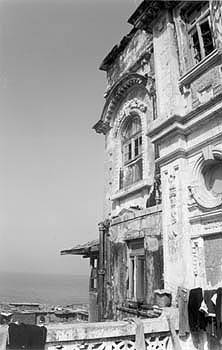 'Mr
Lalubhai was with me up to Boston. He was very kind to me.'
(17) In the same letter he continues, 'Ramdas's father has
gone to England. He is in a hurry to go home. He is a very
good man at heart, only Baniya roughness on the surface.'
(18)
'Mr
Lalubhai was with me up to Boston. He was very kind to me.'
(17) In the same letter he continues, 'Ramdas's father has
gone to England. He is in a hurry to go home. He is a very
good man at heart, only Baniya roughness on the surface.'
(18)
In
his letter of 6 October 1893 written from Bombay to Sri
Jagmohanlalji, Dewan of Khetri, Akshay Kumar Ghosh says,
'In continuation of my last letter I am glad to enlighten
you on various news about Swamiji. Just now I returned from
Mr Chabildas, where I went in the morning to get exhaustive
information about him. Mr Chabildas was always with his
holiness until he separated at Boston in America.' The letter
continues:
On
separating, Mr Chabildas enquired what actual sum Swamiji
had with him, when it was ascertained that Swamiji had only
?100 with him, which in Mr Chabildas' idea is too paltry
a sum to live upon in Chicago for a period longer than three
or four days, as the country is five times as much dear
as England. Swamiji entertains the idea, if possible, of
coming in Europe and spend a longer period in the continent,
say about a year. But at Boston Mr Chabildas requested him
to telegraph his London firm whenever he wanted any pecuniary
help, and has on his way back himself advised his London
agent to respond to him. From New York Mr Chabildas wired
Swamiji twice but was given no reply. Then again from London
Guruji was asked if he was willing to join him to come back
to India. The reply that was received was this, 'Don't wait,
will go back a long period hence.' (19)
In
his letters to his friends and disciples, Swamiji spurred
them on to engage in some kind of business, like selling
Indian goods in the United States, rather than cajole
their white masters to give them jobs. The story of Chabildas
Lalubhai's success, his rise from rags to riches by doing
business very much agreed with Swamiji's thinking. Swamiji
appreciated his enterprising nature.
Chabildas
passed away in Bombay on 5 December 1914, at the age of
seventyseven. ~
Thanks
1.
To the descendants of Chabildas Lalubhai: (a) Smt Gamavati
Seth, daughter of Sri Janmeyjay Chabildas and his first
wife; (b) Smt Hansaben Goragandhi, daughter of Sri Janmeyjay
Chabildas and his second wife. She gave us Chabildas Lalubhai's
photograph; (c) Sri Suryakant Seth, son of Smt Gamavati
Seth, who identified Chabildas Lalubhai's Napeon Sea Road
bungalow; (e) Sri Harishbhai Khot, son of Sri Bhadrasen
Chabildas. He was the second descendant who identified Chabildas
Lalubhai's bungalow on Napeon Sea Road and gave us a copy
of the sale deed of the said bungalow and also its photograph.
2.
To the late Sri Mahendra Seth, son of Smt Gamavati Seth.
He helped us by getting most of the newspaper references
and the will of Chabildas Lalubhai.
3.
To (a) Sri H L Ganjawala, corporate architect and chartered
engineer, for acquiring the layout plan of the Napeon
Sea Road bungalow; and (b) Sri Manesh Ganjawala, architect
and interior designer, for taking pictures of the bungalow.
Acknowledgments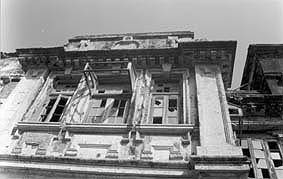
1. Mulchand
Verma, 'Both Mira Road and Bhayander Owned by Gujarati Seth
Chabildas Lalubhai' (Gujarati) in Mumbai Samachar,
14 May 1991.
2. Hemchandra Narsi, 'On Sri Ram Temples in Bombay' (Gujarati).
3. Chabildas' will dated 12 August 1914.
4. Sale deed of Chabildas Lalubhai's bungalow on Napeon
Sea Road to Dorab Shaw Dubash, dated 1 April 1916.
5. 'Daring Businessman Chabildas Lalubhai' (Marathi) in
Upanagar Dhvani, 14 August 1979.
6. A M Khadilkar, A Brief Introduction on Chabildas Lalubhai
(Marathi pamphlet). The author is headmaster of Chabildas
Lalubhai Boys' High School, Dadar, Mumbai 400 028.
7. 'Centenary Celebration of Chabildas School' (Marathi)
in Navkal.
8. Sri Prakash Bhandari, 'Letters Recording Vivekananda's
Troubles in the US' in The Times of India, 6 March
1999.
9. 'Outline of Chabildas Lalubhai' in Bombay Chronicle,
7 December 1914.
10. Kishore A Hursh, 'To Work for the Freedom of India Became
His Duty' (Gujarati) in Saptahik Dastan, 22 December
1955.
11. Vishnu Pandya, 'The Last Will of Shyamji Krishna Verma'
(Gujarati) in Janmabhumi, 12 January 1994.
12. Mangal Bhanushali's Gujarati article in Smarananjali.
Notes and References
1. His Eastern and Western Disciples, The Life of Swami
Vivekananda, 2 vols. (Calcutta: Advaita Ashrama, 1,
2000; 2, 2001,), 1.302.
2. Ibid., 1.295.
3. The Complete Works of Swami Vivekananda, 9 vols.
(Calcutta: Advaita Ashrama, 18, 1989; 9, 1997), 8.13.
4. In 1973, the author's mother, Smt Lilavati, and Srimat
Swami Gautamanandaji Maharaj, President, Sri Ramakrishna
Math, Chennai, had gone to Mansen Kursandas' house to find
out the letters of Swamiji written to Ramdas Chabildas and
his father Chabildas Lalubhai, but they could not find any.
Mansen was Ramdas Chabildas' nephew and lived in Tin Batti,
Walkheshwar, Bombay.
5. History of Arya Samaj (Hindi), 1982, 1.2624.
6. Upanagar Dhvani (see item 5, 'Acknowledgments').
7. CW, 8.289.
8. His Eastern and Western Admirers, Reminiscences of
Swami Vivekananda (Calcutta: Advaita Ashrama, 1994),
20.
9. Reported by Mulchand Verma in Mumbai Samachar,
14 May 1991.
10. The author gathered this information in August 2003
from Smt Motabai Baxi, who is now ninetyfive years old.
11. Upanagar Dhvani.
12. Heard from Smt Hansaben Goragandhi.
13. Reminiscences, 215.
14. From the aforementioned Gujarati paper by Hemchandra
Narsi (see item 2, 'Acknowledgments').
15. Life, 1.304.
16. Ibid., 1.391.
17. CW, 5.12.
18. Ibid., 5.19.
19. Akshay Kumar Ghosh's unpublished letter to Sri Jagmohanlalji,
Dewan of Khetri; by courtesy of Swami Vivekananda Complete
Works Committee, Belur Math.


